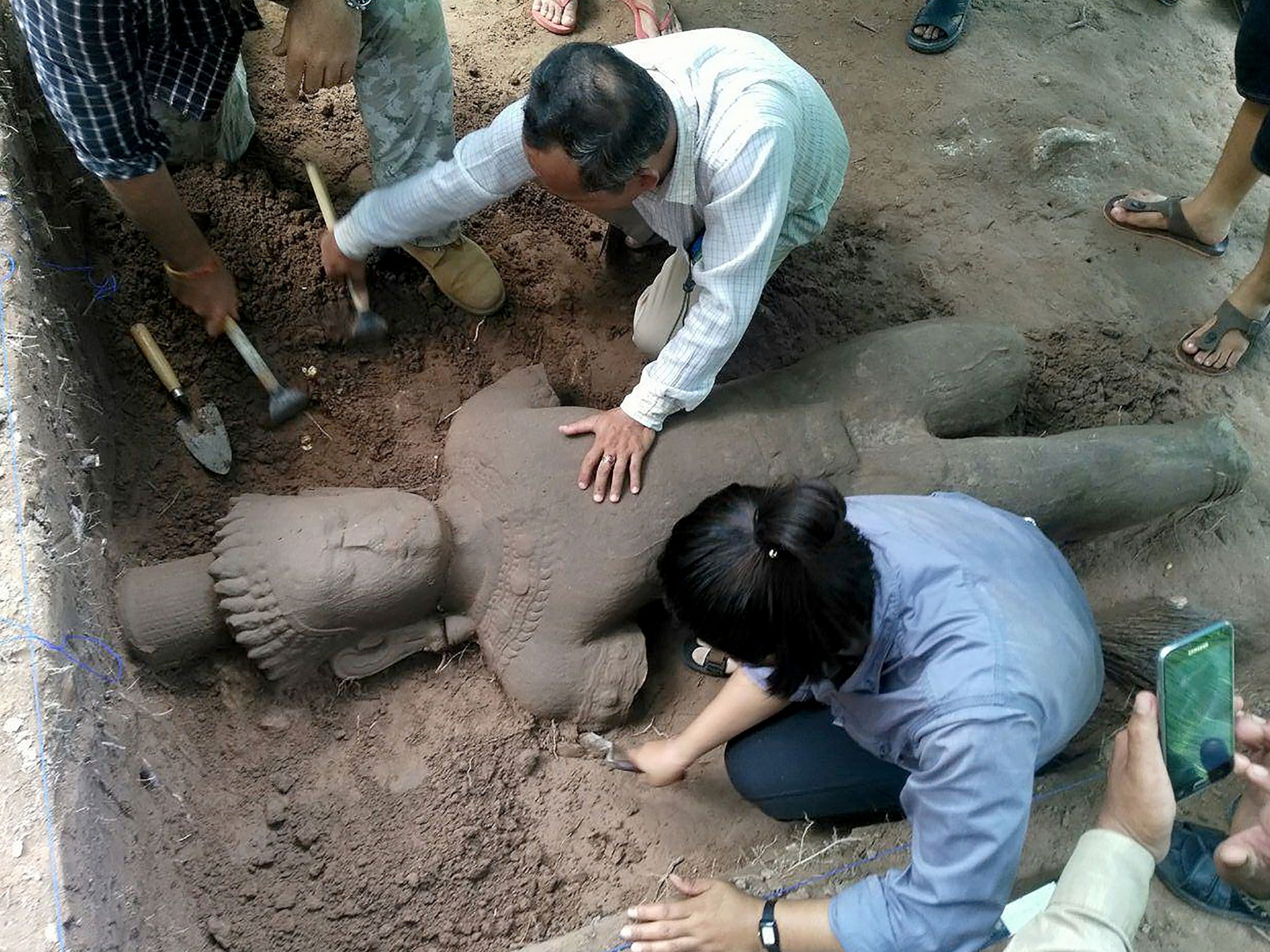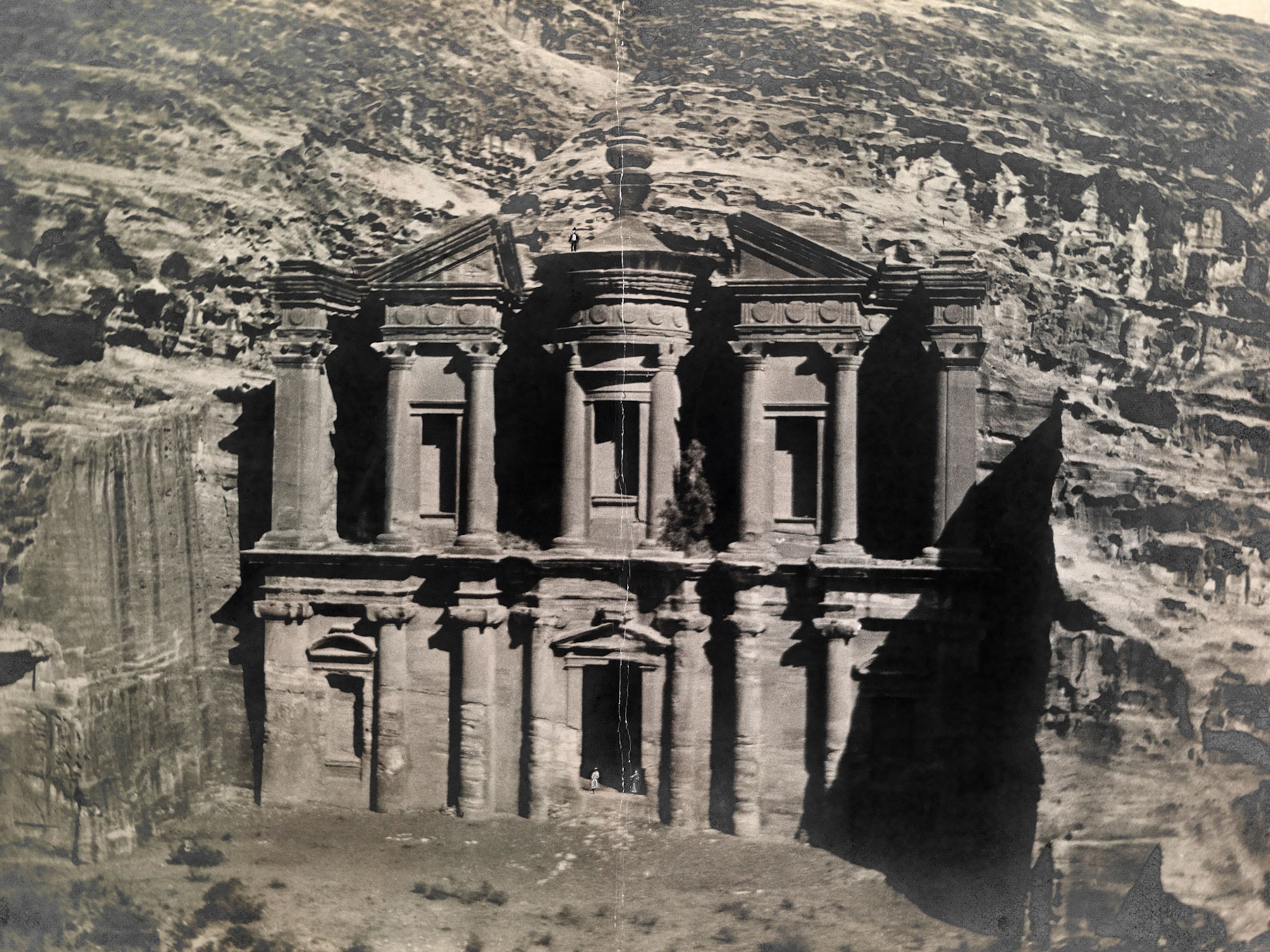
Ancient, Six-Foot Statue Found Near Angkor Wat
During a dig in the famed Angkor park, archaeologists were stunned to find the well-preserved artifact.
When archaeologists began excavating a site just north of Angkor Thom in Cambodia's famous Angkor Archaeological Park, they were expecting to find small artifacts like simple shards of pottery.
What they found instead was a nearly perfectly intact, centuries-old statue that measures just over six feet tall, weighs 440 pounds, and was found at a site that is 800 years old. The statue was found on July 30, on only the second day of a 12-day dig to study a canal connected to the remains of a 12th century hospital.
In an interview with local paper The Cambodian Daily, archaeologists from the Aspara Authority, the government organization that manages Angkor Park, described the find as "something that only happens in the movies."
A press release from the Aspara Authority claims the statue was buried just 16 inches deep. Much of the ornamental decorations depicting the time period's dress can still be clearly discerned; however, parts of both of its legs are missing.
Standing Guard
The statue is sculpted in the image of a guard. Because of its proximity to the ruins of a nearby ancient hospital, researchers believe it likely stood on the facility's grounds by the north entrance of Angkor Thom.
According to the Aspara Authority, there were 102 hospitals built by the 12th century King Jayavarman VII. Hospital complexes consisted of wooden structures, which have since decayed and disappeared, and stone chapels. Four hospitals in the area that had been previously identified are recognizable by temple gates opening toward both the east and west.
Further speaking with The Cambodian Daily, the Apsara Authority's deputy director-general Tan Boun Suy noted, "Jayavarman VII’s reign was truly remarkable in terms of social programs."
Also found nearby were the buried fragments of roof tiles and ceramics, which archaeologists say indicate the presence of wooden hospital structures.
Cambodia's King Jayavarman ruled the Khmer Empire from 1181 to 1220. At the peak of its power, the Khmer Empire also encompassed large swaths of modern day Thailand, Laos, and Vietnam. Angkor Wat, which means "capital temple" was originally constructed for the Hindu god Vishnu before it was later adapted for Buddhist worship.
The empire declined in the 15th century when the city was abandoned.
Looted City
Archaeologists are hailing the statue's discovery as one of the most important finds in the region in recent years.
Angkor Wat is one of the most important archaeological sites in southeast Asia. It's one of the most visited tourist destinations in the region, seeing more than two million visitors every year.
However, despite the region's current popularity, artifacts have been difficult to come by and protections for the park were only instated when the complex was listed as a UNESCO World Heritage Site in 1992.
Many of the site's statues were destroyed by Cambodia's brutal Khmer Rouge regime, and extensive looting followed in the years after the regime's demise.
In addition to research teams lead by the Aspara Authority, the Institute of Southeast Asian Studies’ Yusof Ishak Institute in Singapore participated in the dig with students from Asian countries, the U.S., and Australia.
The statue will be taken to the park's Museum of Norodom Sihanouk where it will be cleaned and placed on display for visitors.





